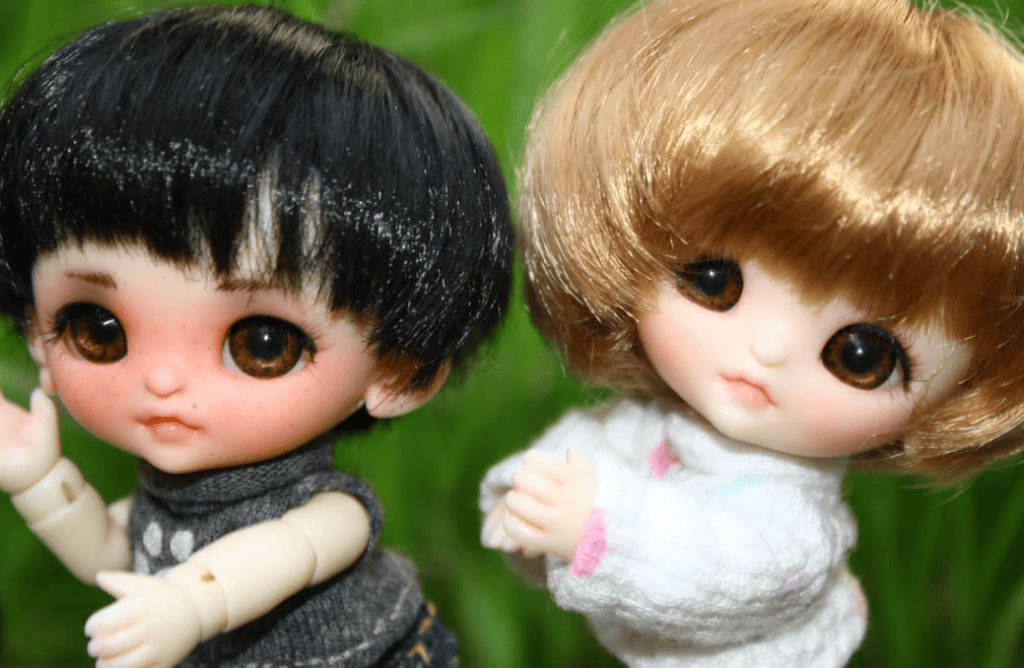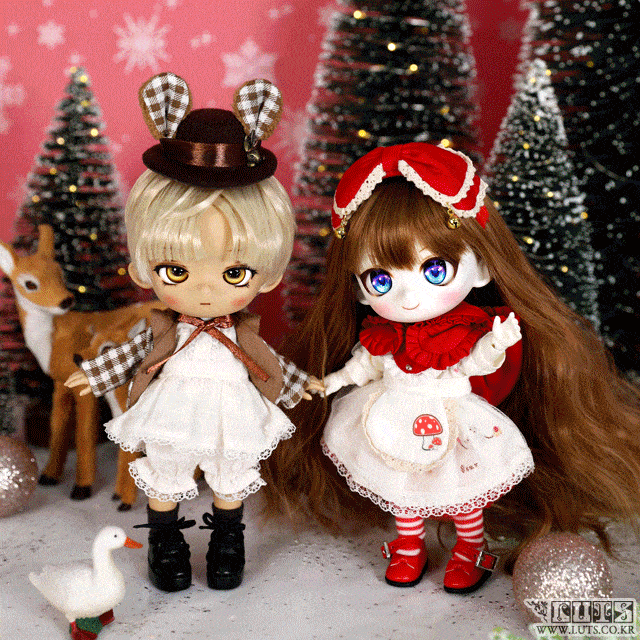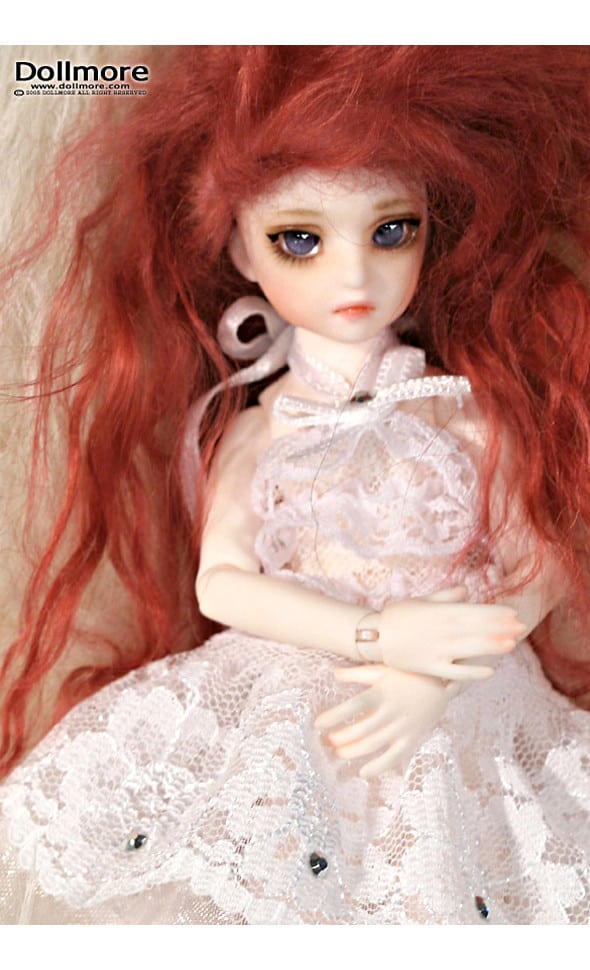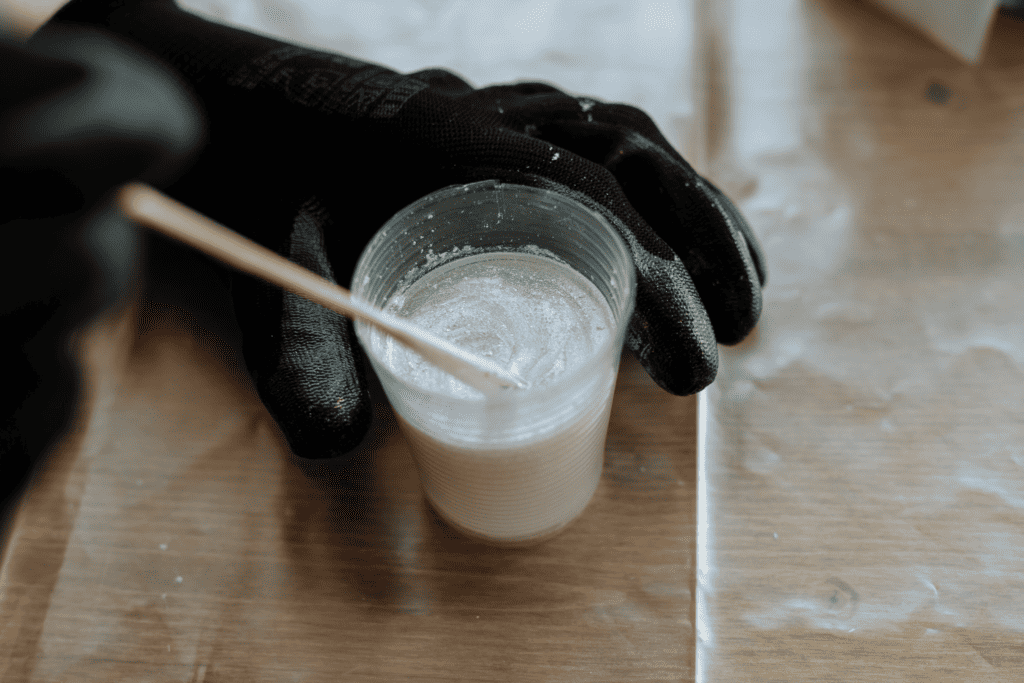Introduction: Welcome to the World of “Tiny” BJD Dolls

(Image courtesy of DollBJD)
As a Ball Jointed Dolls (BJDs) fan, you may have heard the term “tinies” thrown around in doll collector circles. But what exactly are they? Simply put, “tinies” refer to a specific size range of BJD dolls, but there’s more to them than their size.
Brief Explanation of BJD Dolls
Before we dive into what makes a “tinies” doll unique, let’s provide some background on what BJD dolls are. These dolls originated in Japan and quickly gained popularity among collectors worldwide due to their high customization and poseability.
Unlike traditional dolls with fixed limbs and facial features, BJDs have articulated joints that allow them to move and pose in various ways. Additionally, the faceup (painting on the face) and wig can be changed for further customization.
Introducing “tinies”

(Image courtesy of DollBJD)
Now that we know what a BJD doll is, let’s talk about “tinies.” As mentioned, they are part of a specific size range within Ball Jointed Dolls. They are typically smaller than other popular sizes, such as SD 1/3 (Super Dollfie) or MSD 1/4 (Mini Super Dollfie) and YOSD 1/6 (some tinies are lumped into this category). The measurements can vary depending on the manufacturer, but tinies usually fall between 10-22cm tall.
However, their small stature doesn’t make them any less desirable or intricate than other sizes; many collectors adore these smaller dolls for their cuteness and versatility. As we explore this world of tiny wonders throughout this article, you’ll learn more about different types of tinies available today, the materials used to create them, and pros and cons, along with how to customize and care for them.
What are “Tinies” BJD dolls?
If you’re new to the world of ball-jointed dolls (BJD), you might be surprised to learn that there are different subcategories within this type of doll. One of the most popular categories is “tinies,” which is a size classification for BJDs. Unlike larger BJDs, which can be up to 70 or even 80cm tall, “tinies” typically range from 10-22cm in height and are more akin to traditional dollhouse miniatures.
Defining “Tinies”
So what exactly defines a “tiny” BJD? Typically, any doll that falls within the above size range can be considered a “tiny.” However, other characteristics set these dolls apart from their larger counterparts. For example, because they are smaller, many “tinies” have more complex bodies or different proportions.
The Size and General Characteristics
As mentioned earlier, one of the most defining characteristics of “tinies” is their size. Most fall between 10-22cm tall, although some may be slightly bigger or smaller depending on the specific type or brand.
In addition to their smaller size, these dolls tend to have a more fragile appearance due to their delicate features, such as tiny hands and feet. Despite their small stature, many collectors adore “tinies” for their unique charm and personality.
Because they are so small and detailed, these dolls often have incredible expression and character packed into their tiny frames. Whether you’re looking for something cute and whimsical or dark and mysterious, there’s sure to be a “tinies” out there that captures your imagination.
Types of “Tinies”

(Image courtesy of DollBJD)
If you’re new to BJD dolls, you might be surprised to learn that “tinies” come in different types and each doll company has their own names for this size of doll. Each type has its size and features, making them unique and appealing to different collectors.
Here are some common tinies:
PukiFee
The smallest type of “tinies” is the PukiFee, just 11cm tall. FairyLand is the company that makes them and they were seen as revolutionary for creating such a small doll.
Despite their tiny size, these dolls pack a lot of personality into their small frames. PukiFees often come with interchangeable limbs and faces, making them even more customizable than other types of “tinies.”
When choosing which type of “tinies” doll to collect, it’s important to consider your personal preferences regarding size and style. Each type has a unique charm that suits different collectors’ tastes.
Ani Delf
LUTS has a variety of dolls on their site. Here you will find a very unique tiny doll which is more like a hybrid type tiny doll. Their Ani Delf Obitsu is an Ani Delf head on a 11cm Obitsu body.

Banji Doll
Coming in at 14cm in height is the Banji doll by Dollmore. They offer different styles with different options for faceups and body blushing. Dollmore also has a very wide range of BJD dolls and has other tinies as well such as their Bebe doll.

Materials Used for “Tinies”
The Importance of Material Choice
When it comes to creating BJD dolls, the materials used are just as important as the design itself. The choice of material can affect the doll’s weight, texture, flexibility, and durability. For “tinies,” two of the most popular materials used are resin and vinyl.
Resin: The Most Common Material

Resin is a popular material used in creating BJD dolls. It is a type of plastic that becomes solid when exposed to heat or light. One of the most significant advantages of using resin is that it can be dyed or painted to create various skin tones and textures.
Another advantage is that resin dolls have a smooth surface finish, making them look more realistic. They also tend to be more durable than other materials since they don’t easily crack or chip.
However, one downside to resin is that it can be heavy and prone to yellowing over time due to exposure to light. Additionally, because it’s naturally brittle, it must be handled.
Vinyl: A Lightweight Alternative
Vinyl has become another popular material for creating BJD dolls because it is lightweight compared to resin and less prone to yellowing over time. Vinyl also tends to have a softer feel compared with resin.
One major advantage of vinyl is its ability to hold paint better than other materials. This makes it possible for artists and collectors to customize their “tinies” with intricate designs or unique patterns.
However, vinyl dolls may not always have the same level of detail as those made from other materials, such as resin or porcelain. Vinyl is also more rigid than other materials like silicone, so there may be some limitations when posing your dolls.
Resin and Vinyl are excellent choices for making “tinies” BJD dolls. Each material has its pros and cons, so it’s important to choose one that best fits your needs as a collector or artist.
Customization Options for “Tinies”
Faceups
The faceup is the make-up and detailing on a BJD doll’s face. The level of detail and artistry that goes into creating a doll’s faceup is truly amazing. When it comes to “tinies,” many talented artists specialize in creating faceups specifically for these dolls.
Faceups can completely change the look of a doll, giving it a unique personality and style. Most people opt for natural or fantasy-themed faceups, depending on their preferences.
Wigs
Another way to customize a “tiny” BJD doll is through wigs. Wigs come in all shapes, sizes, and colors, allowing collectors to choose the perfect hairstyle for their dolls.
Some wigs are designed specifically for certain types of “tinies,” such as PukiFee or YoSD dolls. Others are more universal in size and can fit multiple types of “tinies.” Wigs often become an extension of the character that you create for your doll.
Clothing

(Image courtesy of DollBJD)
One of the most exciting aspects of collecting and customizing BJD dolls is being able to dress them up in stylish outfits that reflect their unique personalities. Clothing options range from modern-day fashions to historical costumes to elaborate fantasy ensembles. Some collectors even sew their own clothes or commission specific outfits from talented designers – there are no limits when dressing up your “tinies.” Many websites worldwide offer specialized clothing designs just for certain types of tinies.
Personalization at its Best
Customization options allow collectors to personalize each “tiny” BJD doll they own, making them feel like they have created something unique each time they add a new doll to their collection. With the plethora of customizable options available, it’s easy to create a personalized doll that will stand out from the rest. These dolls can be viewed as unique art pieces and truly become part of the personality of its owner.
Collecting and Caring for “Tinies”
Offer tips on how to care for a collection of “Tinies”
Taking care of a “tiny” BJD doll collection is important to ensure their longevity. First, make sure to keep them clean.
Use a soft-bristled brush to remove dust and debris from their clothing and wigs. Use a soft cloth or makeup brush with water or mild soap for face-ups.
Always be gentle when cleaning BJD dolls. Another important aspect of caring for BJD dolls is storage.
Keep them out of direct sunlight and moisture, as it can damage the resin material from which most BJD dolls are made. Store your “tinies” in their original box or display case with padding to avoid scratches and dents.
Provide advice on how to display them properly
When displaying your “tinies,” many options depend on your style and preferences! One popular choice is using open shelving units with individual compartments, allowing each doll to have its own space while being displayed together.
For those who prefer wall displays, floating shelves with built-in lighting can create an attractive ambience in any room. Another option is using glass domes or bell jars to protect the dolls while making them stand out as decorative pieces.
In addition, you can also create dioramas or scenes that showcase your dolls’ personalities and interests. Making miniature props like books, food items, or even pets can add more depth and fun to the display.
Collecting “tiny” BJD dolls is an exciting hobby but requires proper care and attention for longevity. Displaying these little personalities offers many unique opportunities for creative expression while showcasing these beautiful works of art!
Conclusion
“Tiny” BJD dolls are a unique and fascinating subset of the BJD doll community. These miniature dolls come in a variety of sizes and styles and are made from a range of materials. They offer collectors a chance to customize and display their dolls creatively, with countless customization options.
With so many types of “tinies” out there, there is something for everyone in this hobby. Throughout this article, we have explored the different types of “tinies,” including MSDs, YoSDs, PukiFees, and more.
We’ve also discussed the materials commonly used to make these dolls and the customization options available to collectors. Whether you’re interested in creating your custom faceup or want to dress your doll up in adorable outfits, there is no limit to what you can do with these tiny creations.
If you’re new to BJD dolls or looking for something different to add to your collection, “tinies” are worth considering. These small but mighty dolls offer endless possibilities for creativity and fun.
So why not dive into this exciting hobby today? You never know what kind of miniature adventures await!
Also, for more useful information on miniature BJDs, visit my BJD Youtube channel!
Recent Posts
Come join my BJD Newsletter where you will learn about new dolls coming out, BJD doll sales, and artist highlights! There will also be other BJD goodies just for you!
When to Restring: Recognizing Signs Your BJD Needs a Tune-Up
Learn how to recognize signs your BJD needs a tune-up and restringing process. Maintain your doll's stringing for longer life with this step-by-step guide.
